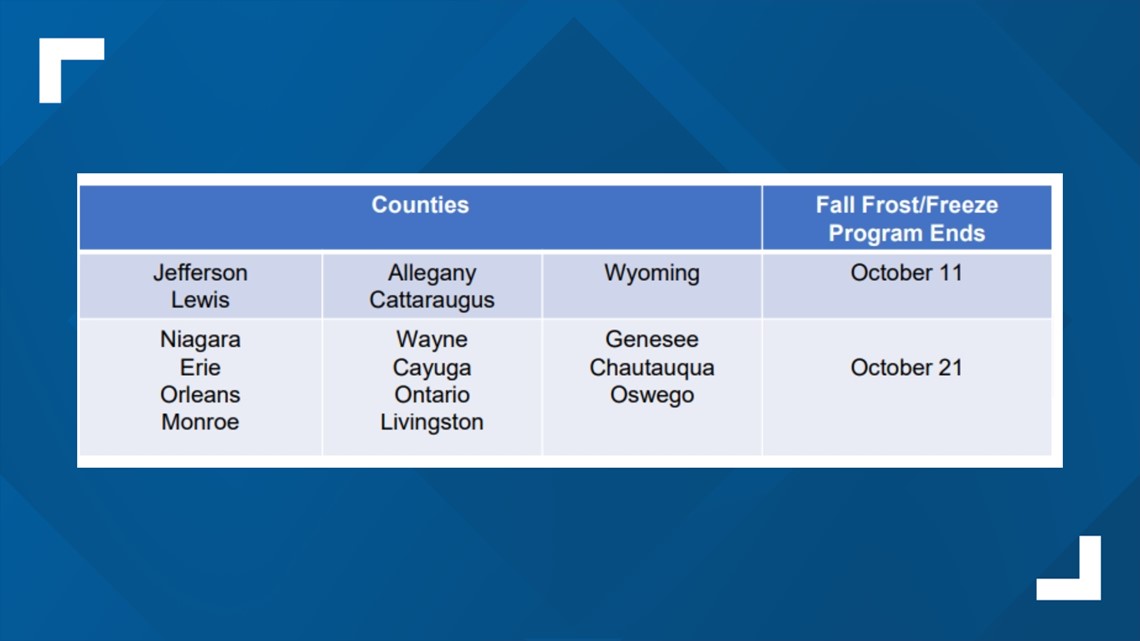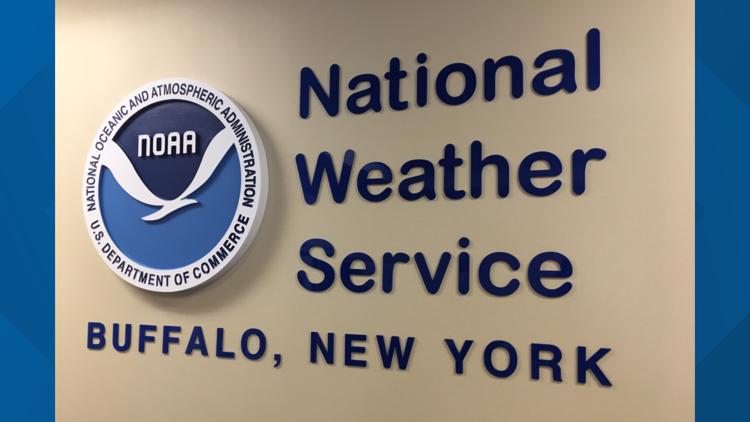BUFFALO, N.Y. — Earlier this month the National Weather Service Office in Buffalo announced that their office, plus several others across the Northeast, plans to experiment with when to issue the last frost/freeze weather alerts for the season.
For the fall, this means that Frost Advisories and Freeze Warnings will not be issued beyond a set date, even if conditions would warrant them. For Cattaraugus, Wyoming, and Allegany counties, that date is October 11. For Niagara, Erie, Orleans, Genesee, and Chautauqua counties, that date is October 21. These weather alerts then would not be issued again until the spring.


The thinking here is that the closer to winter and the colder months, beyond the first hard freeze, Frost Advisories and Freeze Warnings would not be needed anymore out of circumstance. In other words, when the average "Growing Season" would be over for the fall.
The National Weather Service states that the typical Growing Season as, "the period between the average (median) date of the last Spring Freeze and the average date of the first Fall Freeze." It's during that time is when Frost Advisories and Freeze Warnings are issued to alert farmers and growers to take action to protect their plants and crops. Abnormally cold temperatures in both the early spring and late fall can dictate how long and prosperous a growing season is.
With this in mind, growers should be aware of the final frost/freeze date and monitor conditions themselves to protect plants. This means bringing potted plants inside or covering outdoor vegetation before a cold night. Again, the dates listed above would be the last that Frist Advisories and Freeze Warnings are issued, though usually, the growing season would be over by that date, to begin with.



